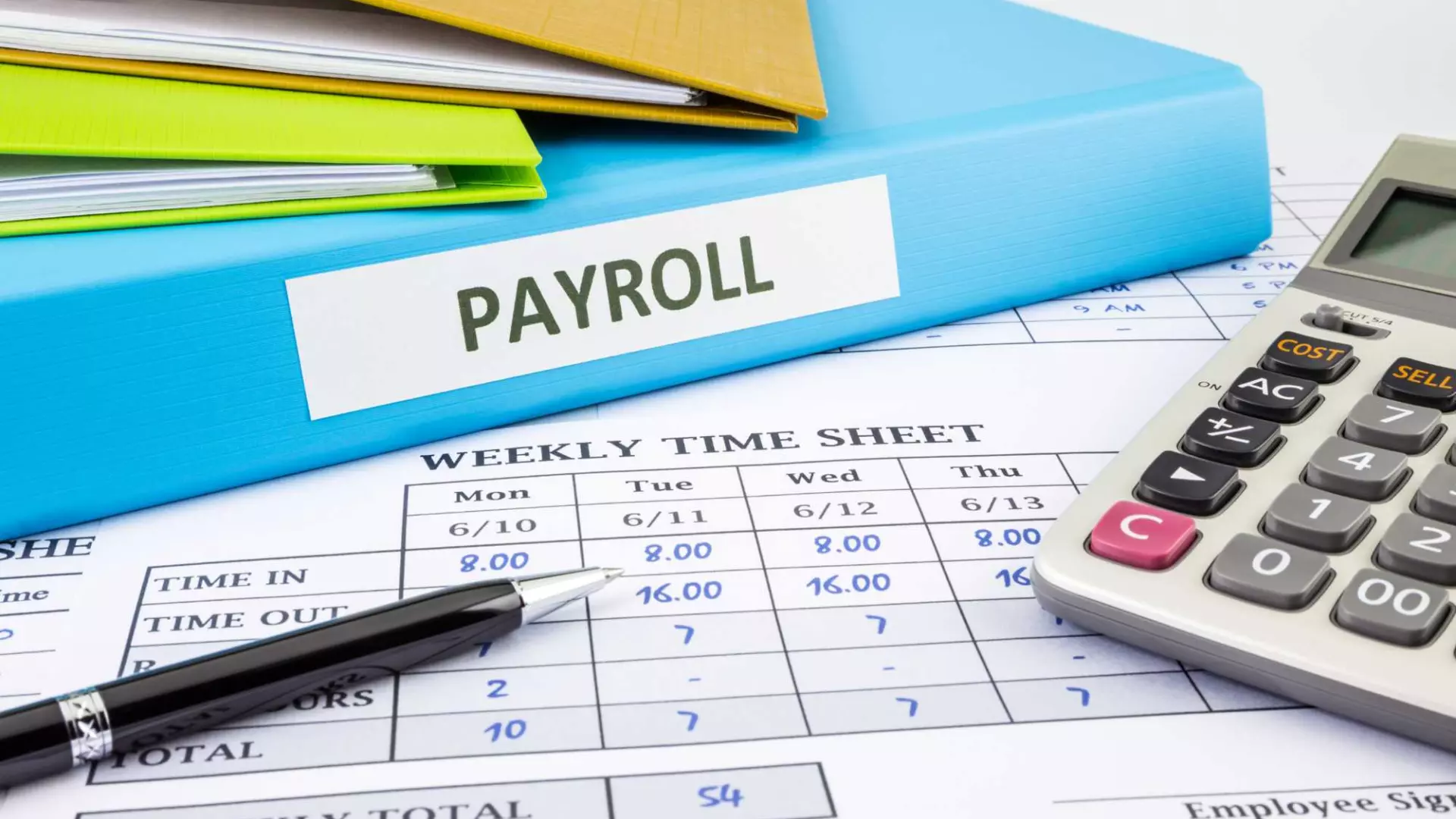Article
Payroll for NDIS Workers

What’s Involved in Managing the Payroll for NDIS Workers
Families come in all shapes and sizes. Many face challenges that mean they need extra help in the home.
The services their helpers provide are as diverse as the families themselves. Whether you’re employing an in-home carer, nanny or gardener, they all need paying properly.
If you’re already in need of extra support, the chances are that time is precious. That can make getting to grips with the mechanics of how to manage payroll for domestic employees very tricky.
Read on for the lowdown, specifically about payroll for NDIS workers, and how Pay The Nanny can help.
Using NDIS Funding to Employ Someone
If you are participating in the National Disability Insurance Scheme (NDIS), you may be self-managing your NDIS funding. If so, you have the option to use part or all of your funding to employ someone to help out regularly in your home.
A key advantage of this is that you will have ultimate control over:
- Those who work with you
- The hours they work
- The tasks that they carry out
Using some of your funding to employ someone does not preclude you from using the rest on self-employed contractors or other services.
If you are unsure about whether a support worker is a contractor or an employee, the ATO has an employee/contractor decision tool here on its website. Please talk to us if you are still unsure.
Employing someone comes with a long list of responsibilities and legal requirements. There are payslips to generate, taxes to deduct, sick pay and leave entitlements to keep on top of, as well as Super and Workers’ Compensation to sort out.
- Please refer to Pay The Nanny’s Employee v Contractor guide here
The Complexities of Paying an Employee
Dealing with these sorts of issues can be time-consuming. If you take your eye off the ball, it can be very easy to slip up and quite innocently find yourself in trouble with the Australian Tax Office (ATO).
In terms of process, payroll for NDIS workers is almost identical to nanny payroll. That’s why Pay The Nanny is best placed to sort out all your payroll admin if you are employing an in-home carer. We’ll tell you more about that later but first, let’s take you through some of the ins and outs of payroll for domestic employees.
Your Responsibilities as an Employer
If you believe that employing someone to help in the home is the right way forward for you and your family, you’ll need to do the following:
- Get a Withholding Payer Number from the ATO
- Take out relevant insurance
- Put in place appropriate health and safety arrangements at home
It will be your responsibility to do the following:
- Negotiate the rate of pay and conditions of your helper
- Withhold their tax and pay it to the ATO
- Meet all superannuation requirements
- Have the appropriate workers’ compensation insurance in place
- Pay wages on the due date and generate payslips
- Issue a payment summary at the end of each financial year
- Report to the ATO
You will also need to make sure that the person you’re employing has a current National Police Clearance and Working with Children/Working with Vulnerable People Screening.
If the person you are thinking of hiring does not have a Clearance/Screening, it is your responsibility to pay the application fee.
If the person you’re employing provides you with details of their National Police Clearance or Working with Children/Working with Vulnerable People Screening, it is up to you to make sure that the Clearance/Screening is still up-to-date.
Withholding PAYG (Income) Tax
As an employer, it will become your responsibility to withhold tax from payments made to your in-home carer. It is not a requirement to have an Australian Business Number (ABN) to do this.
You will, however, need to get a Withholding Payer Number from the ATO. The process to obtain one should take up to a month to complete:
- Get a form NAT337 from the ATO, fill it in and post it back
You can obtain a form by either calling 132866 and requesting one or by downloading it from the ATO’s Application to register a PAYG withholding account page.
Superannuation Guarantee (SG or Super)
There is no requirement to pay Super for someone who carries out work of a “private” or “domestic” nature and who works for you less than 30 hours a week or if you pay them $450 or less before tax in a calendar month.
Work is of a “private” nature if it has to do with an employer in their capacity as a private person. This includes employing someone to support you outside of your home. Work is of a “domestic” nature if it's to do with your home or family.
The minimum Super you’ll need to set aside for your employee is 10 percent of their ordinary time earnings. We refer to these as OTE. The figure is set to rise incrementally to 12 percent by 2025. You have the option to increase the rate even further according to any arrangement you might have with your in-home worker.
Managing the Super Plan
It is quite easy to slip over the 30-hour week line without realising it. If you make a mistake, even inadvertently, there could be serious complications.
There is plenty of anecdotal evidence that paying Super encourages loyalty from employees and helps to reduce in-home carer turnover. It’s therefore well worth considering paying Super regardless of the number of hours you employ your support worker.
Under the NDIS, participants can self-manage the Super plan. They can also choose to get a nominee, the National Disability Insurance Agency (NDIA) or a registered plan management provider to manage it on their behalf.
The ATO has its very own Superannuation Guarantee eligibility tool that can help you to decide whether you have to pay Super or not.
- See Pay The Nanny’s article on Super for “Domestic Workers & Nannies” here
Key Points:
- You’ll need to pay Super if you employ someone for 30 hours a week or more
- There are good reasons to pay Super if your employee works less than 30 hours
Workers’ Compensation
You’ll need to have Workers’ Compensation Insurance in place. It acts to protect employees by paying for medical expenses and loss of wages if they injure themselves while working for you.
Worksafe (VIC, NT, ACT) and WorkCover (TAS, QLD, NSW, SA, WA) are the bodies that manage the workers’ compensation programmes in each territory or state. Only particular, authorised insurance companies can sell the insurance policies. For Norfolk Island, see the link below.
Premiums typically relate to the total figure you pay in salaries during a given year. In some places, if you pay salaries under a certain threshold then you do not need to buy a policy upfront.
Workers’ Comp Where You Live
Depending on where you live, the processes related to Workers’ Comp are slightly different. It’s best to get in touch with your local WorkCover or Worksafe authority to find out how they might apply to you. Here are the links you’ll need:
- Northern Territory - NT WorkSafe
- Western Australia - WorkCover WA
- Norfolk Island - Norfolk Island Workers Compensation Agency
- Australian Capital Territory - WorkSafe ACT
- New South Wales - State Insurance Regulatory Authority (NSW)
- Queensland - WorkCover Queensland
- South Australia - ReturnToWork SA
- Tasmania - WorkCover Tasmania
- Victoria - WorkSafe Victoria
Australia works on a “no-fault” principle. That means workers don’t need to prove an employer has been negligent. When there’s a claim, they only need to demonstrate that an injury or disease is work-related.
Please also refer to Pay The Nanny’s:
- “Guide to Workers Compensation for Household Employers in Australia” here.
Key Points:
- Having Workers’ Comp in place is mandatory
- The management of Workers’ Comp varies depending on where you live
Public Liability and Vehicle Insurance
In a similar way to life, health, home contents or comprehensive car insurance, Public Liability cover is not mandatory if you’re an employer. However, it’s worth considering because it covers you for incidents that happen in your home.
For example, this could include a contractor tripping over equipment and injuring themselves. This kind of insurance might cover damage to property if a service provider were to move furniture or equipment and accidentally break a glass table.
Check Your Current Policy
It’s possible that you may already have Public Liability Insurance for incidents that occur within your own home included in your home and/or contents insurance policy. It’s well worth checking if you’re thinking of employing an in-home carer or if you have contractors coming into where you live.
Bear in mind, however, that any pre-existing Public Liability policy you have may not provide cover for incidents caused by someone outside of the home. If so, you may be able to extend an existing policy or buy another package that is more inclusive.
If you are planning to allow your support worker to use your vehicle, do check your comprehensive car insurance policy beforehand. It’s always best to talk directly to your policy provider rather than simply read through the small print. Make sure there are no age-limit exclusions, for example.
Key Point:
- Consider taking out other non-compulsory types of insurance
How Much Should I Pay My Support Worker?
You can find the maximum or benchmark prices of the supports in your NDIS Plan here. However, when you are self-managing your NDIS funding, you can negotiate the salary rates of pay that you intend to pay your in-home support worker.
You will need to be mindful of the official Award that the role of the person you are employing falls under. You can find out about specific rates of pay and conditions related to home care jobs here on the Fair Work Commission’s website.
As an employer, you will also be responsible for covering the cost of any necessary protective equipment.
Key Points:
- Check out the rates that apply to the Award of the applicable role
- Make sure you understand how overtime and different kinds of leave work
Your Obligations to ATO and Your Employee
As an employer, it’s advisable to keep a compliance calendar. This helps you focus on each payroll cycle of your NDIS worker. Tasks include:
- Drawing up a contract between you and your employee (see below)
- Calculating, leave, overtime, sick and Public Holiday pay
- Paying wages and issuing payslips on time
- Sending withholding tax payments to the ATO
- Working out and paying Super and Workers’ Compensation contributions
- Keeping abreast of rule changes related to ATO and other services
Pay The Nanny has a range of contract templates available. Just let us know if you’d like one when you sign up with us.
- Please refer to the Pay The Nanny article on employment contracts here.
Join Pay The Nanny
As an employer, there is a raft of contractual and tax-related payroll issues for NDIS workers that you’ll have to deal with. Many of them come under a similar umbrella to those that apply to nannies.
We have a team of tax and accounting experts who deal with payroll issues day-in-day-out. They know exactly how to manage payroll for domestic employees.
For tax purposes, when you use Pay The Nanny, we effectively become a co-employer with you. You will be outsourcing all responsibility for accurate NDIS worker payroll to us. You will still maintain full managerial control of your in-home carer and direct the tasks you need completing.
Using Pay The Nanny is a small price to pay for the peace of mind you’ll enjoy knowing that you’ll always be tax-compliant.
- You can read more about how Pay The Nanny operates in this article here.
Get in Touch With Pay The Nanny Now
If you are in the throes of hiring someone to carry out any kind of domestic work at home, caring or otherwise, we’d love to hear from you. We’re on hand to deal with pay, tax, Super and Workers’ Comp along with all other aspects of payroll for NDIS workers.

2025 Guide to Managing Payroll for NDIS Support Workers

Steps to Meet the Legal Requirements for Employing a Nanny

Guide to Workers Compensation for Household Employers in Australia

How Much Does a Nanny Cost in Australia?
